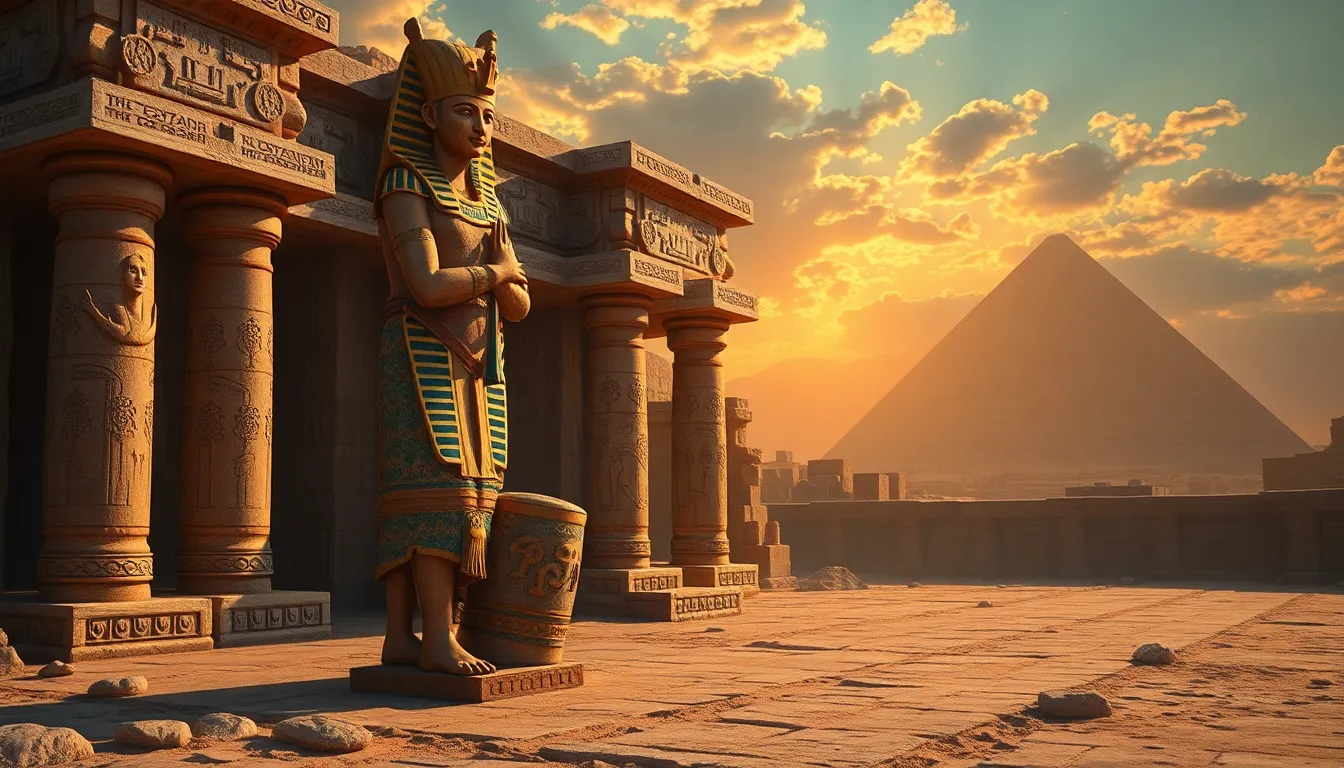The Sacred Texts of Ancient Egypt: Prayers to the Gods
I. Introduction
Ancient Egyptian religion was a complex system of beliefs that guided the daily lives of its people, providing a framework for understanding the world around them and their place within it. This religion encompassed a rich tapestry of deities, rituals, and sacred texts that were integral to the spiritual practices of the time.
Sacred texts played a crucial role in Ancient Egyptian spirituality, serving as a means of communication with the divine. These texts were not merely written records; they were considered living entities that held power and significance. This article aims to explore the sacred texts of Ancient Egypt, focusing on the prayers and hymns that reflected the spirituality and beliefs of this ancient civilization.
II. Historical Context of Ancient Egyptian Religion
The religious beliefs of Ancient Egyptians evolved over thousands of years, influenced by various social, political, and environmental factors. Early religious practices were closely tied to nature and the cycles of life, with the Nile River playing a central role in their spirituality.
Key deities such as Ra, Osiris, Isis, and Anubis were revered, each fulfilling specific roles within the pantheon. For example:
- Ra: The sun god, symbolizing creation and life.
- Osiris: The god of the afterlife, representing resurrection.
- Isis: The goddess of magic and motherhood, protector of the throne.
- Anubis: The god of mummification and the afterlife, guiding souls.
The natural elements, particularly the Nile, were seen as manifestations of the gods’ will, influencing agricultural cycles and daily life, which in turn shaped their religious practices.
III. The Nature of Sacred Texts in Ancient Egypt
Sacred texts in Ancient Egypt were defined as writings that held religious significance, often composed in hieroglyphs or hieratic script. These texts were characterized by their formal structure, use of poetic language, and invocation of divine entities.
Types of sacred texts included:
- Prayers: Direct appeals to the gods for assistance, protection, and favor.
- Hymns: Poetic expressions of praise and adoration for the deities.
- Spells: Ritualistic incantations aimed at invoking magical protection or effects.
- Ritual texts: Instructions for performing religious ceremonies.
These texts were often inscribed on papyrus, tomb walls, or temple pillars, and their preservation was vital. Techniques included careful engraving and the use of durable materials such as stone and metal.
IV. Major Collections of Prayers and Hymns
Several key collections of sacred texts stand out in the study of Ancient Egyptian religion:
- The Pyramid Texts: The oldest religious texts, dating back to the Old Kingdom, found in pyramids. They were intended to guide the pharaoh in the afterlife.
- The Coffin Texts: Emerging during the Middle Kingdom, these texts represented a transition to personal spirituality, allowing individuals to access the afterlife.
- The Book of the Dead: A compilation of spells and prayers designed to assist the deceased in navigating the afterlife, it became widely used from the New Kingdom onward.
V. Themes and Motifs in Egyptian Prayers
The prayers and hymns of Ancient Egypt often revolved around several core themes:
- Invocation of Divine Protection: Many prayers sought the gods’ safeguarding against chaos and evil.
- Expressions of Gratitude: Hymns frequently included thanks for blessings such as health, harvests, and prosperity.
- Requests for Guidance: Individuals often prayed for wisdom and direction, especially during times of uncertainty.
VI. The Role of Priests and Scribes
In Ancient Egypt, priests and scribes held significant roles in the composition and recitation of sacred texts. Their responsibilities included:
- Composing prayers and hymns for various religious ceremonies.
- Performing rituals in temples, ensuring the correct invocation of deities.
- Maintaining the texts and recording new prayers as needed.
The ritual practices within temples were essential for the sustenance of cosmic order, and priests underwent extensive training to fulfill their roles. Their status in society was elevated due to their knowledge and connection to the divine.
VII. The Impact of Sacred Texts on Daily Life
Sacred texts were not confined to religious rituals; they permeated daily life in Ancient Egypt:
- Integration into Rituals: Prayers were recited during personal and communal ceremonies, marking important life events.
- Influence on Art and Architecture: Many texts were depicted in tomb paintings and carvings, serving both decorative and spiritual purposes.
- Legacy and Understanding: The study of these texts has provided invaluable insights into the beliefs and values of Ancient Egyptian society, influencing modern interpretations of their culture.
VIII. Conclusion
In conclusion, the sacred texts of Ancient Egypt, particularly the prayers and hymns, were vital components of the civilization’s religious framework. They not only facilitated communication with the divine but also shaped the spiritual identity of the people. The enduring influence of these texts continues to resonate in contemporary spirituality, highlighting the relevance of studying ancient prayers to understand the complexities of belief and devotion.
The rich legacy of Ancient Egyptian sacred texts invites further exploration and reflection, allowing us to appreciate the profound nature of their spirituality and its impact on human history.




